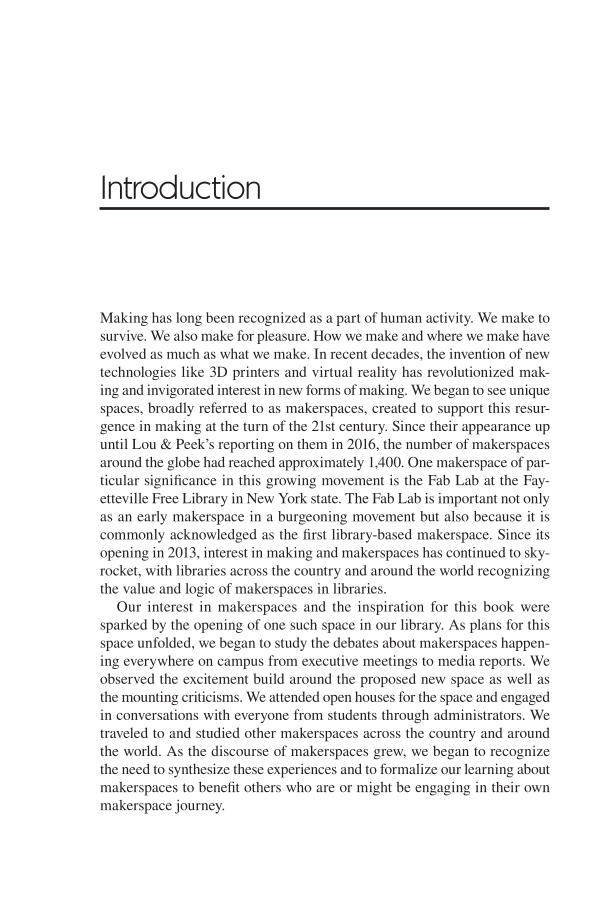Introduction Making has long been recognized as a part of human activity. We make to survive. We also make for pleasure. How we make and where we make have evolved as much as what we make. In recent decades, the invention of new technologies like 3D printers and virtual reality has revolutionized mak- ing and invigorated interest in new forms of making. We began to see unique spaces, broadly referred to as makerspaces, created to support this resur- gence in making at the turn of the 21st century. Since their appearance up until Lou & Peek’s reporting on them in 2016, the number of makerspaces around the globe had reached approximately 1,400. One makerspace of par ticular significance in this growing movement is the Fab Lab at the Fay- etteville Free Library in New York state. The Fab Lab is important not only as an early makerspace in a burgeoning movement but also because it is commonly acknowledged as the first library-based makerspace. Since its opening in 2013, interest in making and makerspaces has continued to sky- rocket, with libraries across the country and around the world recognizing the value and logic of makerspaces in libraries. Our interest in makerspaces and the inspiration for this book were sparked by the opening of one such space in our library. As plans for this space unfolded, we began to study the debates about makerspaces happen- ing everywhere on campus from executive meetings to media reports. We observed the excitement build around the proposed new space as well as the mounting criticisms. We attended open houses for the space and engaged in conversations with everyone from students through administrators. We traveled to and studied other makerspaces across the country and around the world. As the discourse of makerspaces grew, we began to recognize the need to synthesize these experiences and to formalize our learning about makerspaces to benefit others who are or might be engaging in their own makerspace journey.
Document Details My Account Print multiple pages
Print
You have printed 0 times in the last 24 hours.
Your print count will reset on at .
You may print 0 more time(s) before then.
You may print a maximum of 0 pages at a time.





















































































































































































